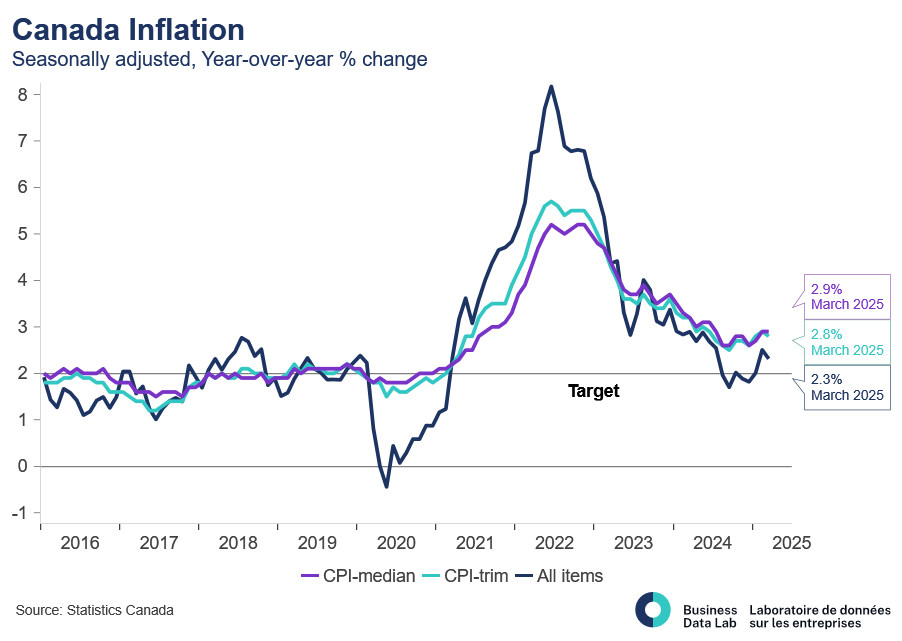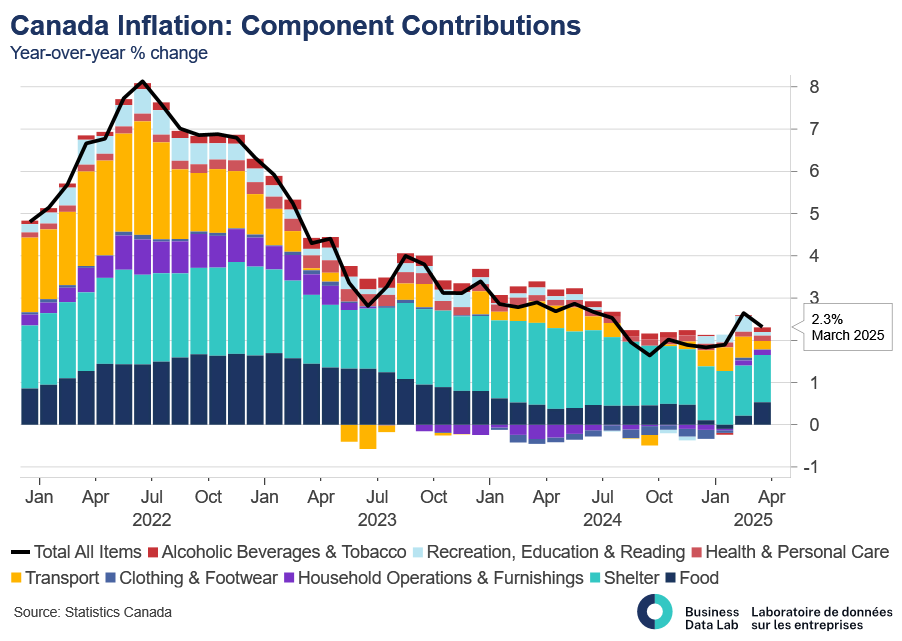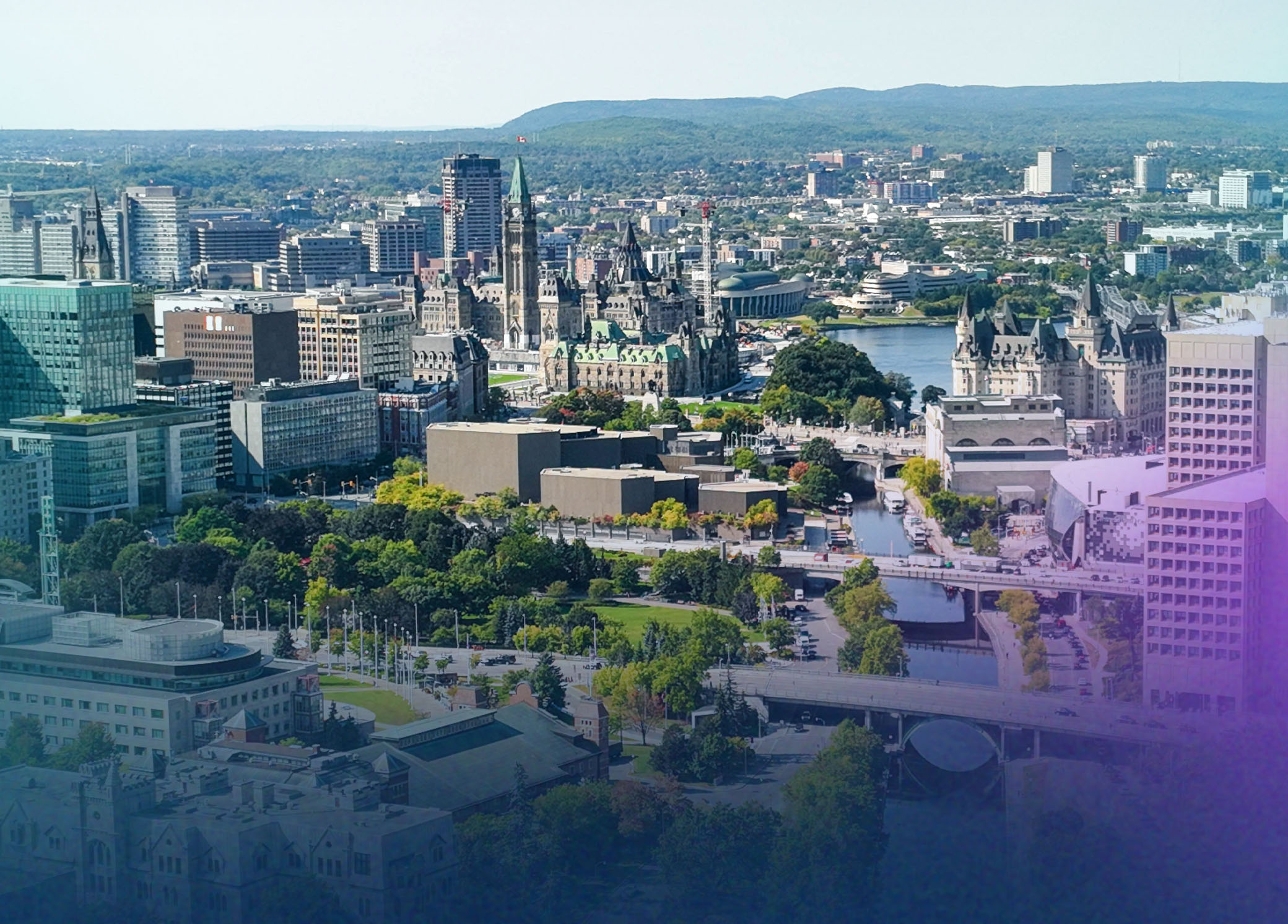Blog /
March 2025 CPI: Prices grounded as Canadian travel to the U.S. ebbs
Inflation grew 2.3% in March, following an increase of 2.6% last month. Some categories experienced stronger monthly growth following the end of the temporary GST break on February 15.

Prices are grounded for now, but probably not for long. In the months ahead, we could start to see the impact of new tariffs pushing prices higher. At the same time, changes to carbon pricing in April will offset some of the price adjustment—adding to the mixed signals the Bank of Canada is having to navigate. If trade tensions continue to escalate, we’re looking at the risk of a stagflationary environment with slower growth and rising prices. With so much uncertainty around growth—especially with tariffs introduced by the U.S.—we expect the Bank to hold rates steady at tomorrow’s meeting.
Summary
- Inflation grew 2.3% in March on an annual basis, following an increase of 2.6% last month. Some categories experienced stronger monthly growth following the end of the temporary GST break on February 15. Overall, lower prices for travel and gasoline brought prices down. Monthly price growth was up 0.3% unadjusted and essentially flat when considering seasonal factors.
- Core measures of inflation held steady at 2.9% annual growth, with CPI excluding food and energy up only 2.4%.
CPI Breakdown
- Price growth slowed on lower prices for airfare, cell phones, and gasoline. Goods impacted by the federal GST holiday reaccelerated in March. Overall goods inflation grew 1.3% year-over-year, led by higher prices for food, alcohol, and clothing.
- Higher discounts for consumer cell phone services drove prices for the category down 6.8% on the month. Gasoline prices were also down due to the higher supply of crude oil, declining 1.8% on the month. Canadian demand for U.S. travel has been notably down due Canada-U.S. tensions. Travel services declined 6.4% monthly.
- Food inflation grew 1.7% monthly, primarily driven by higher prices at restaurants (+4.7%). Grocery price growth was merely 0.1% in March.
- Although goods inflation experienced a temporary rebound with the reversal of the GST holiday, services price growth is still running at 3.1%.
Provincial Trends
Inflation slowed in eight provinces, with Nova Scotia inflation rising 2.3% year-over-year, up from 2.1%.
Implications
- Inflation was a bit lower than the Bank of Canada’s January forecast of 2.4%, but the share of the CPI basket growing at or below the 2% target is now 50%. Some of these discounts pushed down inflation, but the underlying trend isn’t clear. We’ll need to evaluate the impact of the tariff uncertainty and removal of the consumer carbon tax on inflation. Estimates suggest it could remove approximately one percentage point in 2025.
- Financial markets were pricing a 30% probability of a 25-basis-point rate cut at the Bank of Canada’s April 16 meeting, but only moved higher by 8% following the release. The central bank’s upcoming Monetary Policy Report should provide further insight into the inflation and growth outlook. Company pricing behaviour and inflation expectations will surely be a factor the Bank will consider.
- All told, The Bank of Canada has some room to move interest rates lower and we anticipate rates returning to neutral (~2.25%) by summer 2025.
Charts and tables



Sources: Statistics Canada; Canadian Chamber of Commerce Business Data Lab















